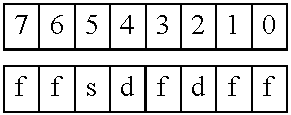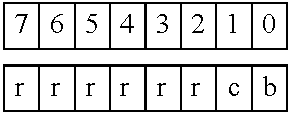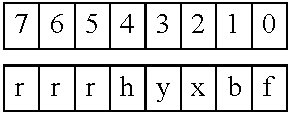Multistandard video decoder and decompression system for processing encoded bit streams including a decoder with token generator and methods relating thereto
a video decoder and encoder technology, applied in the field of multi-standard video decoder and decompression system for processing encoded bit streams, can solve the problems of not being able to fabricate the relatively large amount of dram needed on the chip, limiting the size of the output buffer provided, and not being able to store b pictures in external dram
- Summary
- Abstract
- Description
- Claims
- Application Information
AI Technical Summary
Benefits of technology
Problems solved by technology
Method used
Image
Examples
Embodiment Construction
[0282] As an introduction to the most general features used in a pipeline system which is utilized in the preferred embodiments of the invention, FIG. 1 is a greatly simplified illustration of six cycles of a six-stage pipeline. (As is explained in greater detail below, the preferred embodiment of the pipeline includes several advantageous features not shown in FIG. 1.).
[0283] Referring now to the drawings, wherein like reference numerals denote like or corresponding elements throughout the various figures of the drawings, and more particularly to FIG. 1, there is shown a block diagram of six cycles in practice of the present invention. Each row of boxes illustrates a cycle and each of the different stages are labelled A-F, respectively. Each shaded box indicates that the corresponding stage holds valid data, i.e., data that is to be processed in one of the pipeline stages. After processing (which may involve nothing more than a simple transfer without manipulation of the data) vali...
PUM
 Login to View More
Login to View More Abstract
Description
Claims
Application Information
 Login to View More
Login to View More - R&D
- Intellectual Property
- Life Sciences
- Materials
- Tech Scout
- Unparalleled Data Quality
- Higher Quality Content
- 60% Fewer Hallucinations
Browse by: Latest US Patents, China's latest patents, Technical Efficacy Thesaurus, Application Domain, Technology Topic, Popular Technical Reports.
© 2025 PatSnap. All rights reserved.Legal|Privacy policy|Modern Slavery Act Transparency Statement|Sitemap|About US| Contact US: help@patsnap.com



